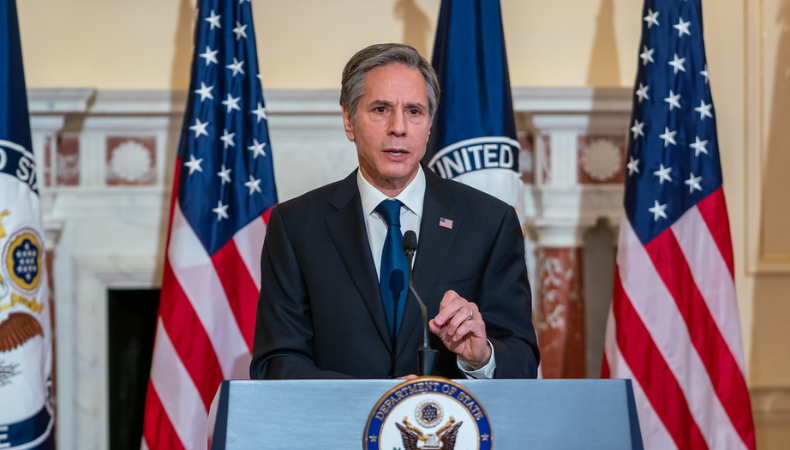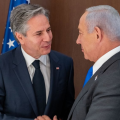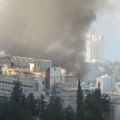Blinken’s Balanced Approach to Hamas’ Cease-Fire Proposal

Recent comments from U.S. Secretary of State Antony Blinken illuminated the convoluted and frequently difficult path to a cease-fire in Gaza. Though mediators are still trying to work out a solution, Hamas has made several modifications to the proposal that is supported by the United States. Blinken recognised the complicated dynamics at work by pointing out that while some of these modifications are “workable,” others are not.
Ongoing Difficulties and Hope
Deep frustrations have characterised the talks because of the challenges in coming to a deal that could put an end to eight months of terrible hostilities. Tens of thousands of Palestinians have died in Gaza throughout this conflict, which has also taken numerous Israeli prisoners prisoner. Moments of hope have been quickly dashed by major discrepancies between the two sides, highlighting the ongoing difficulties in establishing a long-lasting peace.
Regional and Worldwide Effects
Though both Israel and Hamas have not fully embraced the cease-fire plan, it enjoys wide international support. While he did not name the precise adjustments Hamas was looking for, Blinken did say that mediators Qatar, Egypt, and the United States will keep working to “close this deal.” He underlined that Hamas is in charge of the current talks as it modifies its demands, making some of them workable and others not so. With this dynamic, which reflects the wider geopolitical ramifications of the war, Hamas bears the responsibility of choosing its path of action.
The Part Hezbollah Plays and Growing Tensions
Further complicating matters, Hezbollah, an ally of Hamas funded by Iran, has increased regional tensions by launching a huge rocket attack into northern Israel. This act of reprisal for the assassination of a senior commander has made worries about a wider regional war worse. The situation is perilous as seen by the air raid sirens blaring throughout northern Israel and the military’s reaction to almost 160 rockets.
The More General Geopolitical Environment
A bigger geopolitical struggle including several players and interests includes the confrontation between Israel and Hamas. The interdependence of these conflicts is shown in the daily gunfights between Hezbollah and Israel as well as in the larger regional dynamics, which include nuclear talks and international sanctions against North Korea. The Houthi rebels in Yemen and other Iranian-allied groups, such militias in Iraq and Syria, undermine regional stability even more.
Diplomatic Initiatives of Blinken
Visiting the area for the ninth time since the war started, Blinken emphasised the need of negotiating in good faith. He underlined the need of persistent and serious talks by pointing out that the current agreement on the table is “virtually identical” to one that Hamas had already suggested. Together with Sheikh Mohammed bin Abdulrahman bin Jassim Al Thani, the foreign minister and deputy prime minister of Qatar, Blinken highlighted the unhelpful behaviour that both parties had at different times.
Three Phases of the Proposal
Supported by the UN Security Council, the proposed cease-fire plan takes a three-phase strategy. A six-week truce and the release of some captives in return for Palestinian detainees mark the first step. With the Israeli army leaving populous areas, Palestinian civilians would be able to return to their homes and assistance delivery would rise. In return for the release of every last captive, the second phase seeks to put a stop to hostilities permanently and completely remove Israeli forces from Gaza. Rebuilding of Gaza and the return of the remains of the dead captives are the key priorities of the last phase.
Main Points of Stickiness
Major challenges still exist even with the proposal’s comprehensiveness. Citing the ongoing danger to Israeli security, Israel’s envoy to the UN, Gilad Erdan, has said that any deal must guarantee Hamas’s removal from power in Gaza. The demands of Hamas for more robust assurances that the negotiations will result in a long-term cease-fire and departure run counter to this position. Different needs and priorities on both sides make the negotiating terrain difficult and need for cautious navigation.
Keep On Reading
Concerns Both Strategic and Humanitarian
Unbelievably high is the humanitarian cost of the fighting. Over 37,000 Palestinians have lost their lives and 80% of Gaza’s population has been uprooted by Israel’s bombing and military offensives. Current hostilities and limitations have hampered attempts to bring in humanitarian supplies, aggravating the general hunger and misery. Regarding Israel, there have been many civilian casualties and continuous security concerns as a result of the Hamas attack and the ensuing fighting.
Endnotes
The requirement of defusing tensions and communicating is still vital as the world community keeps a careful eye. The dividing parties cannot be reconciled without Blinken’s diplomatic efforts and the ongoing participation of important mediators. Though there are many obstacles in the way of peace, optimism for a long-lasting solution never wanes. In a world growing more linked by the day, maintaining stability and security on the Korean Peninsula and beyond calls for careful balancing of diplomatic, humanitarian, and strategic objectives.









